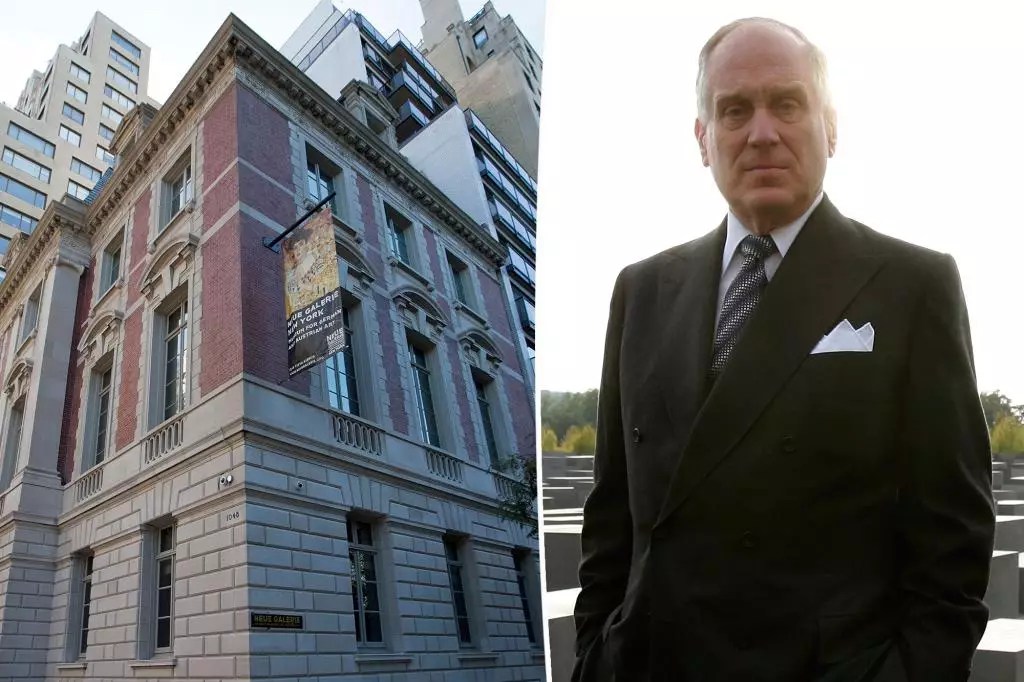In recent weeks, a number of art galleries across New York City have fallen victim to anti-Israel graffiti and red paint vandalism. However, there is a controversial divide among gallery owners on whether to keep these attacks secret or acknowledge them as acts of rank antisemitism. Some argue that publicizing the attacks would lend credibility to the vandals, while others believe it is hypocritical for artists to repress expressions. This article will explore the incidents, the response from gallery owners, and the broader implications of these acts of vandalism.
The targeted art galleries span various locations and sizes, from small hipster operations on the Lower East Side to renowned Fifth Avenue institutions. Graffiti, bearing signs quoting alleged Palestinian death tolls, and messages urging galleries to stop working with Zionists have appeared on the walls. In a particularly notable case, the prominent Pace gallery was vandalized with the word “Intifada” in red letters, believed to be a response to their representation of Israeli artist Michal Rovner’s work titled “Signals.” The vandalism was significant enough for the gallery to close temporarily to carry out clean-up efforts.
A Growing Divide Among Gallery Owners
Within the art community, there is a stark divergence in how gallery owners choose to respond to these attacks. Some believe that the public and even those within the art world remain unaware of these hate-fuelled acts and draw comparisons to the marking of Jewish businesses in pre-Holocaust Germany. These individuals insist on denouncing the acts and raising awareness. However, others, like the co-founder of Lyles and King gallery, Isaac Lyles, support the vandals’ freedom of expression and opinion, regardless of the message. Lyles explains that gallery spaces should embrace diverse viewpoints and that his gallery did not release a statement or contact the police following the attack.
While some gallery owners remain neutral on Middle Eastern politics, others are vocal about their stance. The owners of Lévy Gorvy Dayan gallery publicly expressed distress over an open letter supporting Palestine on Artforum due to its narrow focus. These owners denounced violence in both Israel and Gaza but emphasized the need for a comprehensive understanding of the situation. It is essential to remember that the editor of Artforum was fired after the publication of the letter, highlighting the significant backlash it incurred.
The art community itself remains divided on how best to respond to these attacks. Certain individuals advocate for open condemnations and wish to raise awareness among the general public. They perceive the vandalism as part of a broader issue of rising antisemitism and compare it to past atrocities. On the other hand, gallery owners who choose to downplay the incidents simply view themselves as collateral damage in a broader scheme of targeting galleries within a hot area for openings.
Amidst these divisive responses, it is important to acknowledge the resilience and unity within the art community. Galleries affected by the attacks have come together to support one another in cleaning up the vandalism. Rather than focusing on individual politics, the galleries have transcended their differences and found common ground in the face of adversity. In this sense, the attacks have unintentionally sparked a sense of camaraderie among gallery owners.
The recent anti-Israel graffiti and red paint attacks on New York City art galleries have exposed the deep divisions within the art world. Gallery owners are torn between acknowledging these acts as rank antisemitism or downplaying them to avoid giving the vandals credibility. While some owners choose to denounce the attacks and raise awareness, others support the freedom of expression and opinion, regardless of the message conveyed. As the art community grapples with these incidents, it is crucial to foster unity, embrace diversity, and confront the broader issue of rising antisemitism.







Leave a Reply